Tateyama: Japan's Sacred Autumn Alps – A Miraculous Trek Through Divine Fall Foliage
7/6/2025
15views
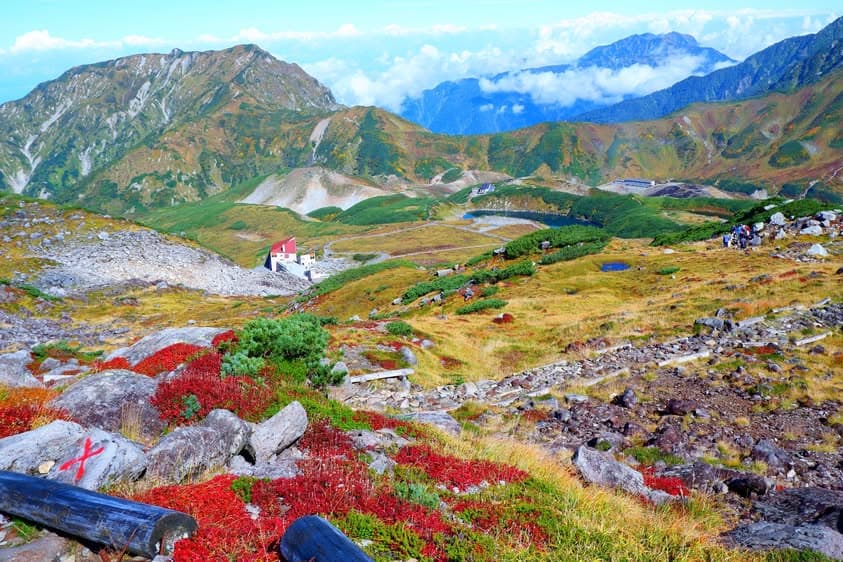
Did you know that Japan is home to "sacred mountains" that are not only breathtakingly beautiful but also deeply imbued with ancient beliefs? And among them, there's one mountain that radiates a divine glow, especially during the autumn foliage season. This is Tateyama, soaring majestically in Toyama Prefecture. Ranked as one of Japan's Three Sacred Mountains, Tateyama offers a unique and world-renowned access method via the Tateyama Kurobe Alpine Route, allowing visitors to easily experience a 3,000m-class mountain environment. Its overwhelming beauty, particularly during autumn, captivates all who behold it.
When I first witnessed Tateyama's autumn leaves, I was left speechless by the richness of its colors and its sheer scale. The fiery reds of the rowan trees, the vibrant yellows of the Japanese white birch, and the deep greens of the creeping pines weave together a brocade of autumn hues that truly embodies the phrase "a journey through divine mountain scenery".It wasn't just the visual splendor; it was a profound experience that allowed me to feel the mountain's long history as an object of worship and the powerful vitality of life thriving within it .In this article, I will share the unparalleled charm of Tateyama's autumn foliage hiking, what you can experience there, and why a professional guide like myself is indispensable for foreign travelers to safely and fully enjoy this extraordinary journey. Let's embark on a miraculous autumn journey to the "Roof of Japan."
Contents
The Sacredness as One of Japan's Three Sacred Mountains
Tateyama is revered as one of Japan's Three Sacred Mountains, alongside Mt. Fuji and Mt. Hakusan, and has been an object of mountain worship since ancient times.During the Heian period, Shugendo ascetics underwent rigorous mountain training here, and in the Edo period, pilgrims from all over Japan flocked to it, solidifying its reputation as a dwelling place for deities.As depicted in the Tateyama Mandala, the mountain's peaks were seen as the Pure Land, while Jigokudani (Hell Valley) was likened to hell. A pilgrimage here offered a simulated afterlife experience, seeking spiritual rebirth.This profound history and culture add an even deeper sacred atmosphere to Tateyama's natural beauty.
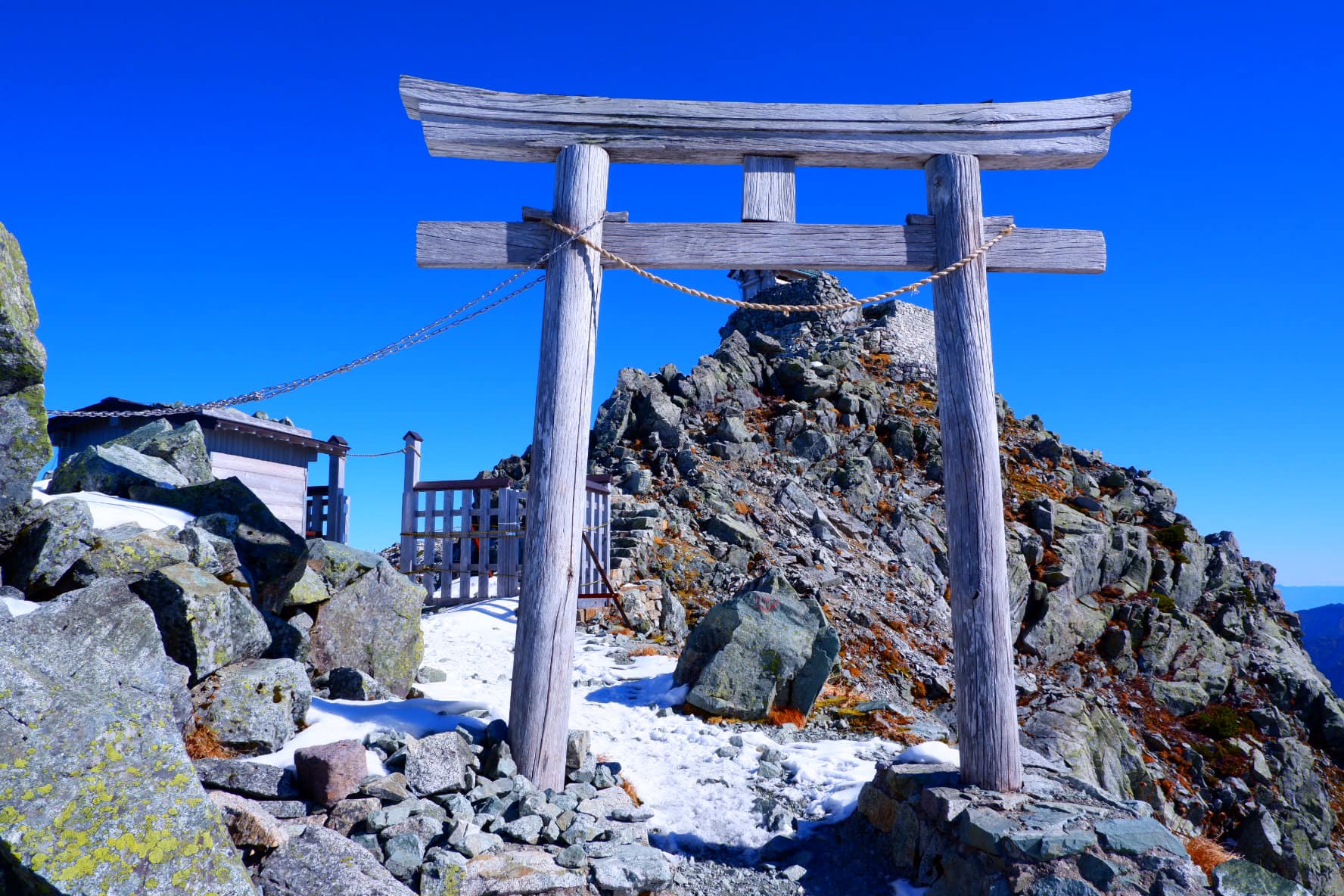
The Unique Access of the Tateyama Kurobe Alpine Route
The Tateyama Kurobe Alpine Route is a world-renowned mountain sightseeing route connecting Toyama and Nagano Prefectures, spanning 37.2 km with a maximum elevation difference of 1,975m.The route's greatest appeal lies in its unique system: private cars are prohibited in certain sections, requiring visitors to transfer between six different modes of transportation, including cable cars, highland buses, electric buses (replacing trolleybuses from April 15, 2025 ), and ropeways.Each mode of transport offers unique engineering and perspectives of the magnificent mountain scenery, making the journey itself an attraction.This allows even those without extensive physical stamina to easily reach Murodo at an altitude of 2,450m and experience a 3,000m-class mountain environment, offering a unique adventure unlike any other mountain.
Breathtaking Autumn Foliage
Tateyama's autumn foliage typically begins earlier than most places in Japan, with peak viewing from mid-September to early October.The fiery reds of the rowan trees, the vivid yellows of the Japanese white birch, and the deep greens of the creeping pines create a rich, colorful panorama, like an autumn brocade carpet.Due to the significant elevation difference, the autumn colors descend from the peaks to the foothills over approximately one and a half months, allowing visitors to enjoy a gradient of hues. Depending on the timing, you might even witness the spectacular "three-tiered autumn foliage," where the white of lingering snow, the reds and yellows of autumn leaves, and the green of the foothills coexist.The harmony with the clear autumn sky is truly breathtaking.
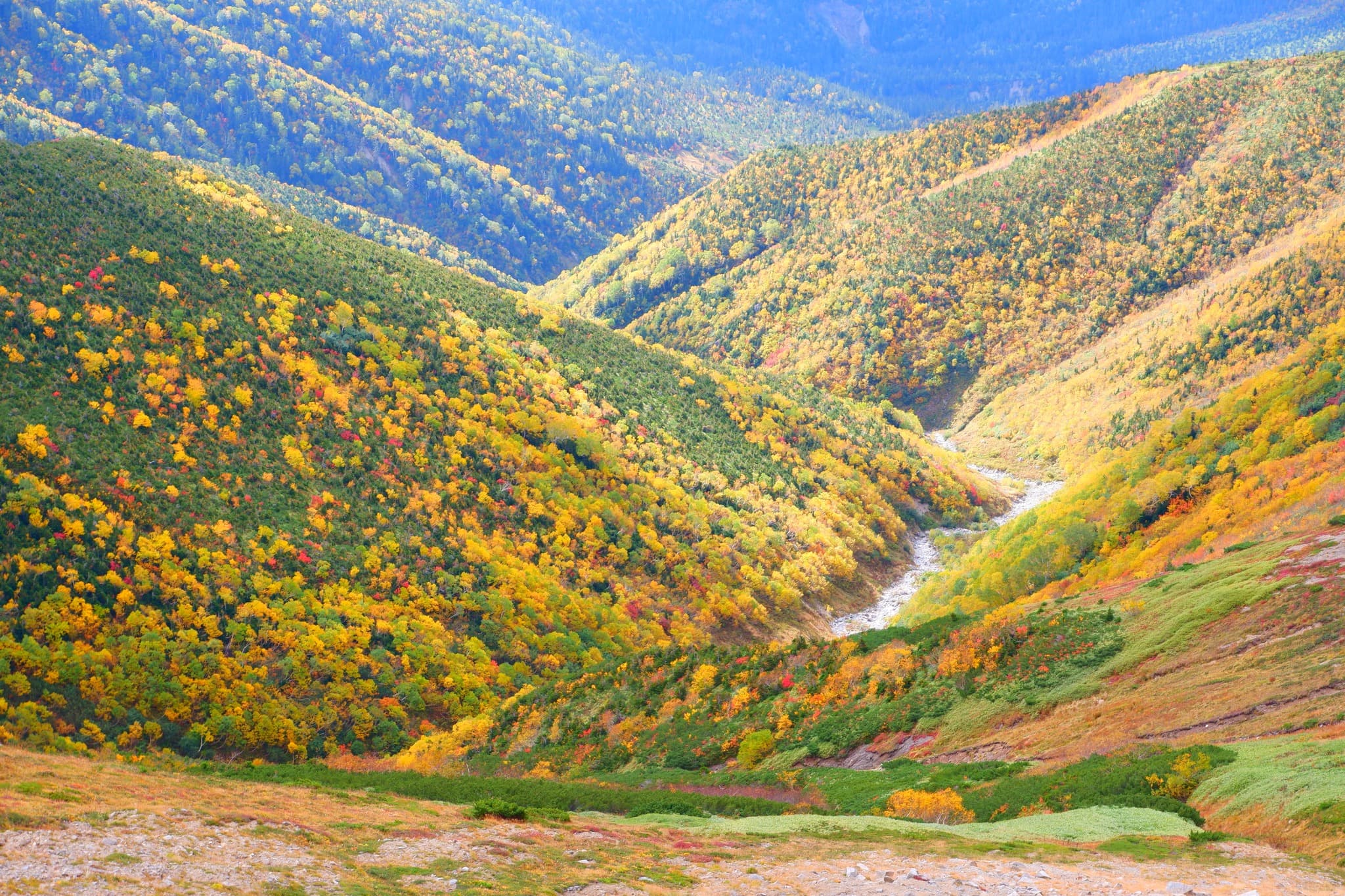
Murodo-daira's Spectacular Scenery and Alpine Plants
Murodo-daira (2,450m), a highlight of the Alpine Route, is a treasure trove of spectacular scenery, with beautiful crater lakes nestled against the backdrop of the majestic Tateyama mountain range.Mikurigaike Pond, often called "the most beautiful volcanic lake in the Northern Alps," captivates visitors with its mysterious deep blue waters reflecting the Tateyama Three Peaks.The surrounding area is home to clusters of alpine plants like Chinguruma and Watasuge, which turn a golden hue in autumn, offering a different kind of beauty as "grass foliage".
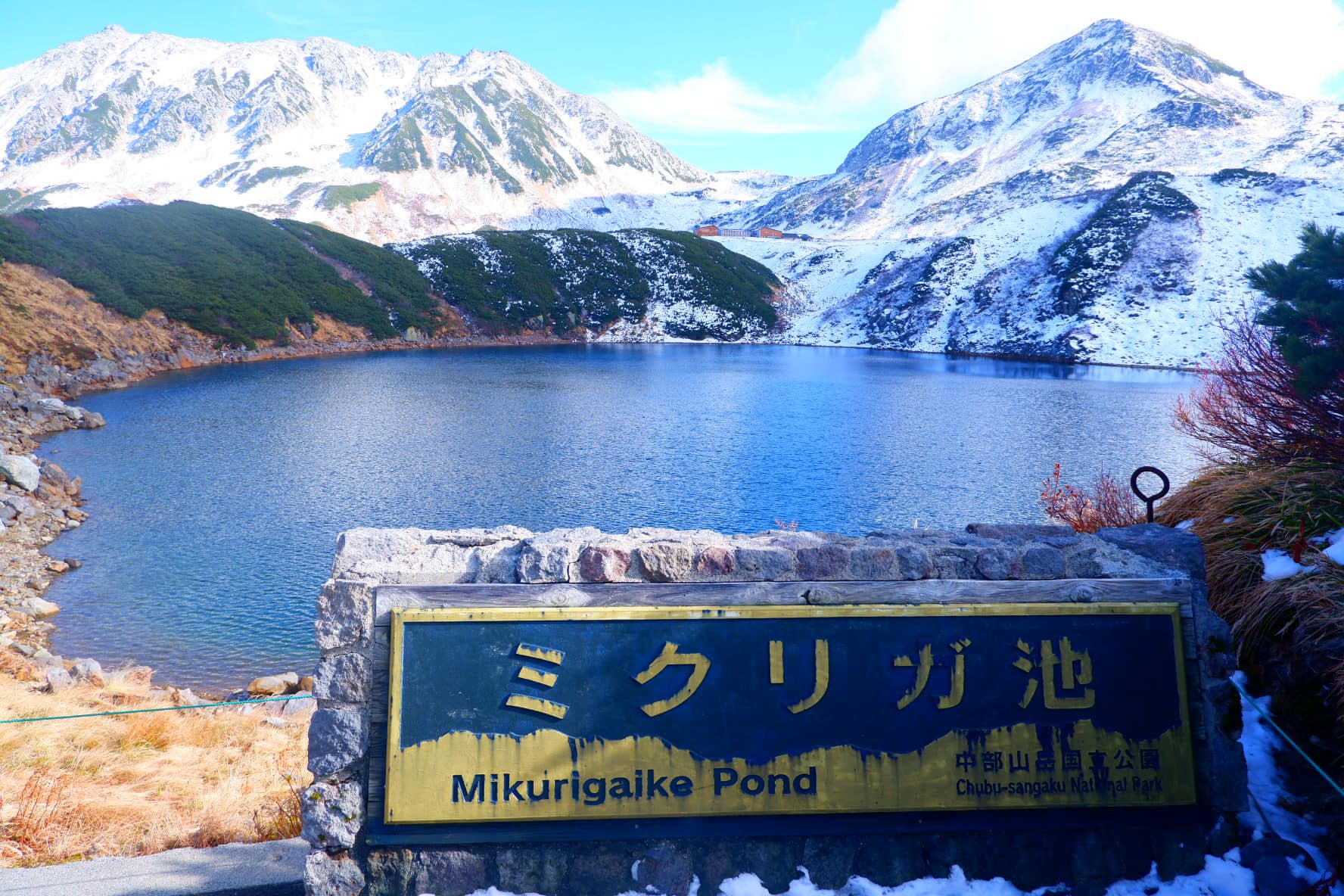
Grand Mountain Panorama
Tateyama is the collective name for three peaks: Oyama (3,003m), Onanjiyama (3,015m), and Fujinooritate (2,999m). Traversing these peaks offers a grand mountain panorama.On clear days, you can see not only the famous peaks of the Northern Alps, such as Mt. Yari and Mt. Kasagadake, but also as far as Mt. Fuji, giving you the sensation of walking above the clouds.
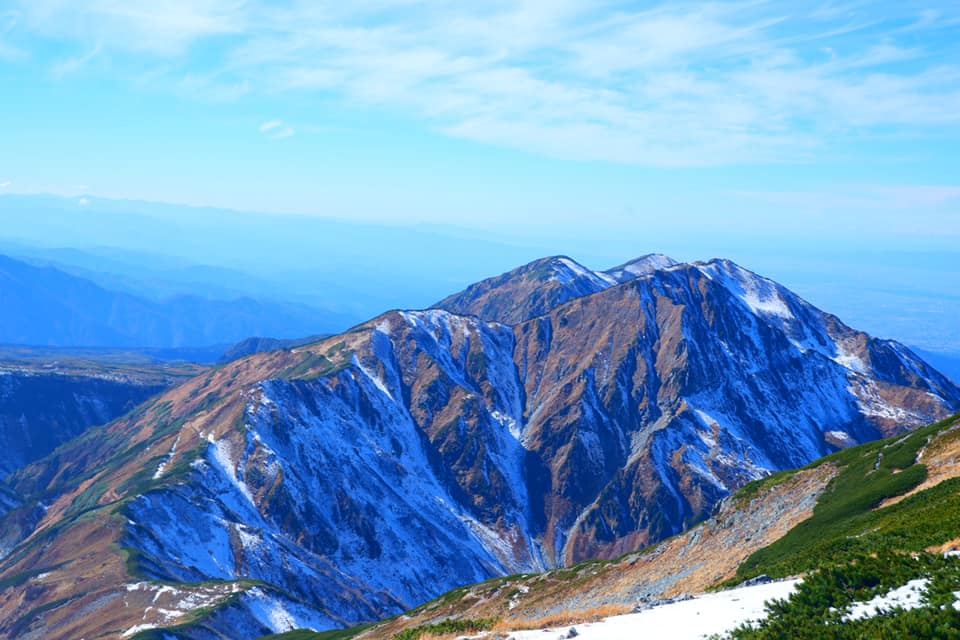
Detailed 1-Night, 2-Day (or Day Trip) Tateyama Autumn Foliage Hike: Itinerary and Experience Highlights
Tateyama offers a variety of hiking and walking routes to suit different fitness levels and experiences.
Typical Routes
Day Trip (Beginner/Entry-Level): Murodo to Oyama Course This course starts from Murodo Terminal (2,450m) and aims for Oyama (3,003m), one of Tateyama's main peaks.
Course Overview: Murodo → Ichinokoshi (gentle, well-maintained path, watch for lingering snow) → Oyama Summit (steep rocky ascent) → Ichinokoshi → Murodo.
Estimated Time: Approximately 3 hours 25 minutes (round trip).
Highlights: Oyama Shrine at the summit , panoramic views from 3,000m. The descent requires even more caution than the ascent.
Surrounding Walks: Even if you don't climb Oyama, there are plenty of easy walks around Murodo-daira, such as the loop around Mikurigaike Pond (approx. 1 hour) , Jigokudani (Hell Valley, limited access due to volcanic gas, view from afar only) , and Raijyo-zawa (campground and hot springs available) , allowing you to enjoy alpine plants and spectacular scenery.
1-Night, 2-Day Hike (Intermediate): Tateyama Three Peaks Traverse For more serious hikers, a traverse of all three Tateyama peaks (Oyama, Onanjiyama, Fujinooritate) is recommended.
Day 1: Murodo → Oyama → Ichinokoshi Sanso (overnight stay).
Day 2: Ichinokoshi Sanso → Onanjiyama → Fujinooritate → Murodo.
Estimated Time: Approximately 9 hours 10 minutes (total distance 11.1 km).
Highlights: Walking along the main ridge of the Tateyama mountain range offers expansive views of the surrounding mountains, the Toyama Plain, Toyama Bay, and even the Noto Peninsula in the distance.An overnight stay in a mountain hut provides a unique experience in the heart of the mountains, allowing you to enjoy the starry night sky.
Alternative: Staying overnight in Murodo and enjoying a sunrise view on the second day after a day of exploring the surroundings or climbing Oyama is also a popular option.
Highlights at Key Points
Murodo-daira: This is the central hub of the Tateyama Kurobe Alpine Route, offering well-equipped facilities including Hotel Tateyama and Tateyama Murodo Sanso , hot springs (such as Mikurigaike Onsen) , restaurants, and shops.Numerous walking trails are maintained from here, allowing you to enjoy alpine flora and magnificent views.
Mikurigaike Pond: Located about a 20-minute walk from Murodo Terminal, this beautiful volcanic lake reflects Tateyama on its surface.
Raijyo-zawa: This area has a designated campsite, allowing for tent camping.Several mountain huts, such as Raijyo-so, are also located here, offering hot spring access.
Oyama: As the main peak of Tateyama, Oyama has the Oyama Shrine at its summit.The view from the 3,000m summit is simply breathtaking.
Mountain Hut Stays: Staying overnight in a mountain hut offers a unique experience unlike anything found in the city. Interactions with fellow climbers, the starry night sky, and the sunrise are unforgettable memories.Most mountain huts typically accept cash payments only.
Physical and Mental Challenge and Achievement: Tateyama's high altitude presents risks such as altitude sickness and fatigue from long walks.However, overcoming these challenges in the midst of magnificent nature brings a sense of accomplishment that is truly priceless.
Why a Guide is Indispensable for Foreign Travelers: Safely and Deeply Experiencing the Sacred Sky
Tateyama's unparalleled beauty attracts travelers from all over the world. However, for foreign visitors to safely and deeply experience this "sacred sky" while understanding its cultural context, the presence of a specialized guide is essential.
Complex Alpine Route Travel and Booking
The Tateyama Kurobe Alpine Route's unique system of transferring between six different modes of transportation is a major attraction, but its complexity can be a significant hurdle for foreign travelers.Especially during the autumn foliage season, the route becomes extremely crowded with both domestic and international tourists, making advance ticket booking essential and often a fierce competition.Navigating the differences in access from the Toyama side (Tateyama Station) and the Nagano side (Ogizawa), deciding which route to take, and managing transfer times during peak congestion can be very challenging for first-time visitors.
Altitude Sickness Risk and Health Management
Murodo-daira is located at an altitude of 2,450m, and ascending to this height in a short period carries the risk of developing altitude sickness.Symptoms such as headaches, nausea, and dizziness can significantly diminish the enjoyment of your trip and, if severe, can be dangerous.Knowledge and experience regarding altitude sickness are crucial for early detection of symptoms and maintaining an appropriate pace.
Harsh Mountain Environment
As a 3,000m-class alpine region, Tateyama's weather can change rapidly, with strong winds, low temperatures, rain, and even sudden snowfall.The ability to choose and prepare appropriate gear, assess constantly changing weather conditions, and manage safety is difficult for foreign travelers without mountain experience.
Language and Information Barrier
Signage within the Alpine Route, information at mountain huts, and trail markers are primarily in Japanese, making it challenging for non-Japanese speakers to access real-time weather and trail conditions.Furthermore, understanding Tateyama's deep mountain worship and cultural background provides a richer experience that goes beyond simply viewing the scenery.
The Value of Your Guide
I, Ryoto, am here to overcome these challenges and ensure that foreign travelers can experience the full splendor of Tateyama. I offer the following value:
Perfect Logistics Arrangement: I will handle and support all aspects of your logistics, including Alpine Route ticket arrangements (especially the challenging autumn season bookings), combining various transportation methods, securing mountain hut accommodations, and optimizing your time management.You can focus on the breathtaking scenery without worrying about travel details.
Safety Management Professional: I prioritize your safety by providing support for high-altitude activities, altitude sickness prevention, weather judgment, and crisis management.You can concentrate on enjoying Tateyama's spectacular views with peace of mind.
Deep Nature and Culture Commentary: Beyond just the scenery, I will provide profound insights and learning experiences not found in guidebooks, covering Tateyama's geology, alpine plants, the ecology of the Rock Ptarmigan (a special natural monument) , and the stories of Japan's mountain worship and history.
Bilingual Support: With perfect communication in English and French, you can enjoy your trip without any language barriers.
Van Life Expertise: Leveraging my extensive experience and knowledge gained from van life adventures across various Japanese mountains, I will elevate this special Tateyama climb into a deeper, more personalized experience.
Tips and Precautions for Your Visit
When planning your Tateyama autumn foliage hike, there are several important tips and precautions to keep in mind.
Best Season
The peak of Tateyama's autumn foliage typically occurs from mid-September to early October.This period is exceptionally beautiful, attracting many tourists and climbers, so expect crowds.
Required Equipment
Tateyama is a 3,000m-class mountain, where temperatures can be low even in summer, and weather can change rapidly, making appropriate gear essential.
Hiking Boots: Sturdy, waterproof hiking boots with ankle support are a must. Athletic shoes are insufficient.
Rainwear: A two-piece, waterproof and windproof rain suit (e.g., Gore-Tex) is indispensable to protect against sudden rain and hypothermia. Umbrellas are not suitable due to strong winds.
Warm Clothing: Bring layers of warm clothing, such as fleece or a light down jacket. Temperatures at high altitudes can be 10-15°C lower than on flat ground, and wind chill can make it feel even colder.
Backpack: Approximately 20L for day trips, and 30-45L for overnight stays in mountain huts.
Headlamp: Essential for mountain hut interiors (where lighting is minimal) or in case of unexpected darkness. Don't forget spare batteries.
Snacks and Water Bottle: High-calorie snacks for energy replenishment and sufficient water (sports drinks are also recommended) are crucial.
Other: Hat, gloves, sunglasses, sunscreen, first-aid kit, and cash (most mountain huts only accept cash) are also essential.
Altitude Sickness Prevention
Upon arrival at Murodo (2,450m), avoid strenuous activity immediately. Instead, take 1-2 hours to rest or take a light stroll to acclimatize your body to the altitude.Frequent hydration is also important.If you feel any symptoms, do not push yourself and prioritize descending to a lower altitude.
Alpine Route Booking
Due to the high volume of visitors during the autumn foliage season, advance online booking for Alpine Route tickets is essential.If you plan to stay in a mountain hut, early booking is also necessary.
Safety Measures
Beware of Sudden Weather Changes: Mountain weather is unpredictable. Always check the latest weather forecast before and during your hike, and plan with ample time.
Early Departure: Starting early allows more time to complete your hike safely and avoid unexpected weather changes.
Submit Climbing Notification: Even for summer hikes, submitting a climbing notification is strongly recommended. This document helps rescue teams quickly locate you in case of an emergency.You can submit it at Murodo Terminal.
Respect Wildlife: If you encounter Rock Ptarmigans (Raicho), which are special natural monuments, or other wildlife, observe them quietly from a distance and avoid disturbing them.
Leave No Trace: Tateyama is part of a National Park and a precious natural environment. Always take all your trash with you, and do not stray from designated paths to protect alpine plants and wetlands.
Conclusion
Tateyama's autumn foliage hike offers a truly miraculous experience that stirs the soul. Despite its accessible nature, it provides a divine blend of breathtaking autumn colors at 3,000m-class peaks and a rich history of mountain worship spanning over 1,300 years.Why not embark on an unforgettable journey to this sacred sky, where you can witness the spectacular autumn splendor and connect with the profound spiritual essence of Japan?Planning a Tateyama autumn foliage hike can be incredibly challenging for foreign travelers alone. That's where I, Ryoto, come in. I will ensure your adventure is safe, seamless, and truly unforgettable. I will meticulously plan and guide your tailor-made mountain adventure, perfectly suited to your skills and desires. Let's create cherished memories together in this sacred Japanese mountain!